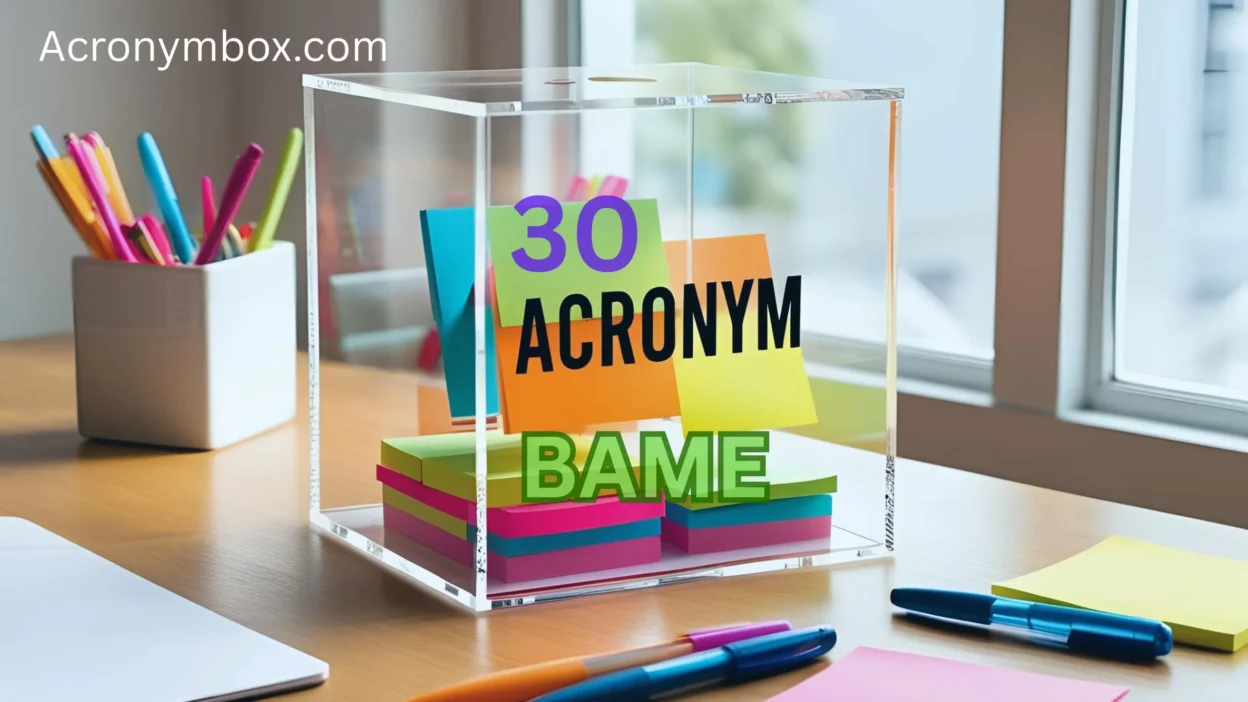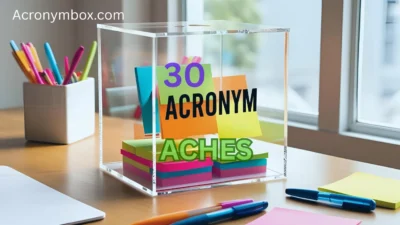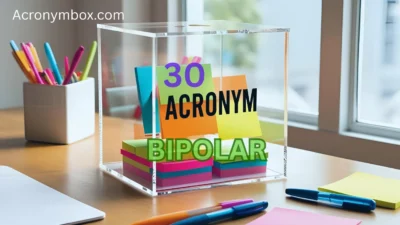The term “BAME acronym” originally stands for Black, Asian, and Minority Ethnic, commonly used in the UK to describe people from non-white backgrounds. However, over time, this term has stirred debate: while it was meant to promote inclusivity, some argue that it lumps distinct cultural identities into a catch-all label, flattening the rich diversity of each group.
That’s why writers, educators, businesses, and creators are looking for more accurate, respectful, and context-aware alternatives to the term BAME—especially when aiming for thoughtful, inclusive language.
In this post, we’ll explore 30 alternatives to the “BAME acronym”, each with its own nuance, purpose, and best-use scenario. We’ll break down what each alternative means, when it works best, and provide an example to help you use it with confidence.
Let’s jump in.
🔁 30 BAME Acronym Alternatives and When to Use Them
1. POC – People of Color
Meaning: A broad U.S.-originated term for all non-white individuals.
Example: Many POC face unique barriers in the workplace.
Use When: You need an umbrella term in U.S.-based contexts, but be aware it may feel impersonal.
2. Global Majority
Meaning: Refers to non-white people who make up most of the world’s population.
Example: We center voices from the Global Majority in our media platform.
Use When: Wanting to shift from deficit-based to empowerment-based language.
3. Ethnically Diverse Groups
Meaning: People from various ethnic backgrounds.
Example: We’re increasing outreach to ethnically diverse groups.
Use When: Emphasizing variety in heritage without labeling.
4. Underrepresented Communities
Meaning: Groups marginalized or excluded in certain systems.
Example: Scholarships are open to underrepresented communities in tech.
Use When: Highlighting access and equity gaps.
5. Racialized People
Meaning: Groups subjected to racial categorization by society.
Example: Policies must address issues impacting racialized people.
Use When: Academic or policy contexts focused on systemic impact.
6. Minority Ethnic Groups
Meaning: Ethnic groups that are minorities in a given population.
Example: Health outcomes vary among minority ethnic groups.
Use When: Government, health, or demographic studies.
7. Culturally Diverse Communities
Meaning: Emphasizes cultural variety rather than race.
Example: We’re celebrating culturally diverse communities during Heritage Month.
Use When: Celebratory or community-focused contexts.
8. Black and Brown Communities
Meaning: Often used to describe solidarity among Black and Latinx or South Asian groups.
Example: Our work uplifts Black and Brown communities.
Use When: Social justice or advocacy work in specific racial contexts.
9. People from Diverse Backgrounds
Meaning: General and flexible term for people with varying lived experiences.
Example: Hiring more people from diverse backgrounds builds better teams.
Use When: Professional or HR settings.
10. People with Lived Experience of Racism
Meaning: Focuses on those directly affected by racial injustice.
Example: Policy councils include people with lived experience of racism.
Use When: Centering experience over identity.
11. Ethnically Minoritized
Meaning: Highlights that minority status is socially constructed.
Example: We support ethnically minoritized students.
Use When: Inclusive institutions, academia, equity-centered work.
12. Non-White Individuals
Meaning: Contrasts with whiteness as a dominant social category.
Example: Data was collected from white and non-white individuals.
Use When: Statistical or comparative use—less ideal for casual conversation.
13. Communities of Color
Meaning: General U.S.-based term.
Example: Communities of color often face disproportionate policing.
Use When: Advocacy and systemic analysis.
14. Marginalized Ethnic Groups
Meaning: Ethnic groups excluded from power and resources.
Example: We advocate for the rights of marginalized ethnic groups.
Use When: Policy, academic, or nonprofit settings.
15. Multiracial Communities
Meaning: Groups that include or identify as more than one race.
Example: Multiracial communities often navigate unique identity challenges.
Use When: Discussing intersectional identity.
16. Diaspora Communities
Meaning: Communities living outside their ancestral homeland.
Example: Diaspora communities bring rich cultural perspectives.
Use When: Global, historical, or cultural conversations.
17. Black, Asian and Other Ethnic Minorities
Meaning: A more specific alternative to BAME.
Example: Surveys show disparities among Black, Asian, and other ethnic minorities.
Use When: Specific UK policy or data usage.
18. Ethnic Heritage Groups
Meaning: Centers culture, history, and lineage.
Example: Programs engage ethnic heritage groups through storytelling.
Use When: Arts, culture, or community outreach.
19. People of the Global South
Meaning: Refers to historically colonized or economically disadvantaged countries.
Example: We prioritize voices from the Global South in our publications.
Use When: Geopolitical or global justice discussions.
20. Historically Excluded Populations
Meaning: Highlights structural exclusion over time.
Example: Funding prioritizes historically excluded populations.
Use When: Academic, DEI, or grant-related language.
21. BiPOC – Black, Indigenous, and People of Color
Meaning: Attempts to center Black and Indigenous experiences.
Example: BiPOC leaders shared insights during the panel.
Use When: U.S. contexts with intersectional race focus.
22. Multicultural Communities
Meaning: Emphasizes coexistence of various cultures.
Example: We host multicultural community festivals.
Use When: Education, events, or branding.
23. Ethnic Minorities
Meaning: Common in UK census and legal contexts.
Example: Ethnic minorities face housing discrimination.
Use When: Official statistics or policy writing.
24. Racial and Ethnic Minorities
Meaning: Clarifies both race and ethnicity dimensions.
Example: Studies showed gaps for racial and ethnic minorities.
Use When: Inclusive data or analysis.
25. Culturally Marginalized Groups
Meaning: Groups left out of mainstream cultural narratives.
Example: Museums are re-centering culturally marginalized groups.
Use When: Arts, media, or education.
26. Communities Facing Racial Inequity
Meaning: Focus on effects of racial injustice.
Example: Grants support communities facing racial inequity.
Use When: Systemic change efforts.
27. Communities Impacted by Colonialism
Meaning: Specific to historically colonized groups.
Example: We uplift stories from communities impacted by colonialism.
Use When: Historical or reparative frameworks.
28. People from Minority Backgrounds
Meaning: Slightly softer term than “ethnic minorities.”
Example: Internships are open to people from minority backgrounds.
Use When: General writing or outreach.
29. Equity-Seeking Groups
Meaning: Centers groups working toward fairness.
Example: Our policies support equity-seeking groups in education.
Use When: Policy, nonprofit, or DEI work.
30. Communities of Shared Identity
Meaning: A neutral, values-based term.
Example: Our program connects communities of shared identity.
Use When: Values-forward or inclusive brand language.
🧭 Choosing the Right Alternative: What to Consider
1. Audience & Location
- UK-specific? Use Ethnic Minorities, Ethnically Minoritized, or Global Majority.
- U.S. context? Try POC, BiPOC, or Communities of Color.
2. Tone of Conversation
- Formal or academic? Use Racialized, Underrepresented, or Historically Excluded.
- Community-forward or emotional tone? Use Diaspora, Black and Brown, or Global Majority.
3. Avoiding Generalization
Try to be as specific as possible. Whenever you can, name the community directly (e.g., “Black students” instead of “BAME”) to show respect and clarity.
✍️ Final Thoughts
Language shapes how we see others—and how they feel seen. While “BAME” may have once filled a gap, we now have more accurate and empowering terms to choose from.
So ask yourself:
“What’s the most specific, respectful way to name this group?”
Choosing well is more than political correctness—it’s cultural clarity and care.




